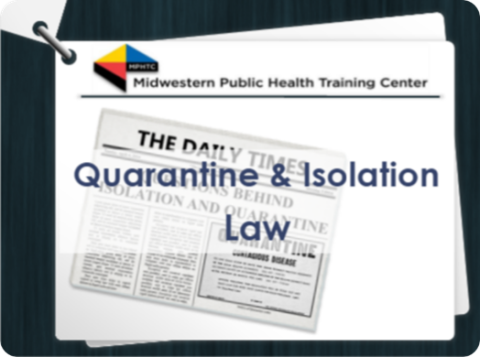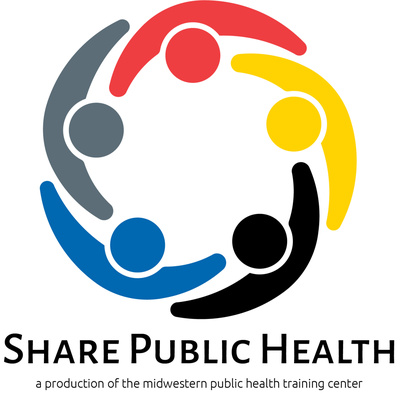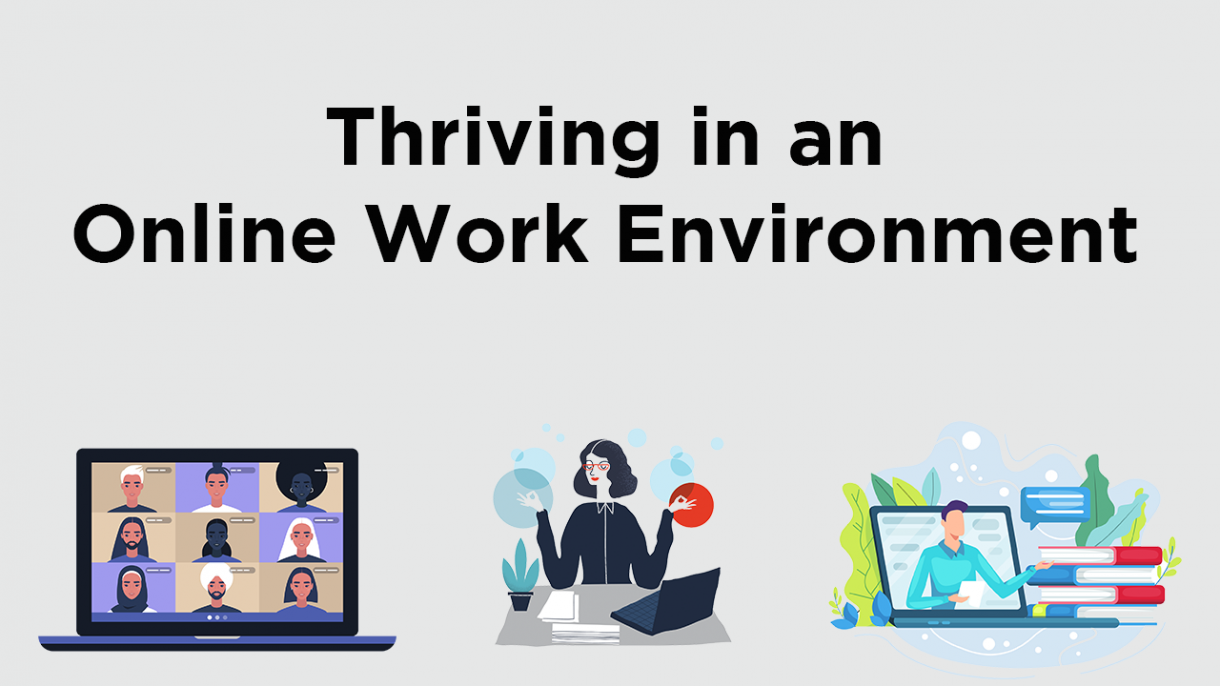There are three modules in this course:
- Iowa Legal Code and Quarantine and Isolation provides a detailed account of the legal tools available in Iowa code and how to use them. You will have the opportunity to test your understanding of the material presented at various points in the module.
- Quarantine and Isolation During a Public Health Disaster contains information on legal tools that can be used during a public health disaster. Included in this module is a link to an article that discusses key considerations in making the decision to impose a wide-scale quarantine.
- Resources is a list of agencies who can answer your questions and provide you with assistance during a bio-emergency, particularly in regards to isolation and quarantine. It also contains a bio-emergency preparedness checklist for you to review.
Intended Audience
This training is intended for individuals who are new Public Health Administrators and Public Health practitioners who need to increase their ability to effectively contain communicable diseases through the legal tools of quarantine and isolation.
Length
The learner should be able to complete this training in one hour
Learning Objectives
After the completion of the course, you will be able to do the following:
- Identify diseases and conditions that must be reported under Iowa law
- Explain how to follow related reporting guidelines
- Distinguish between the legal definitions of quarantine, isolation and public health disaster in Iowa law
- Describe how to contain a communicable disease in a bio-emergency under Iowa law
- Determine who has jurisdiction to impose quarantine under Iowa law
- Describe the key factors a public health professional should consider when deciding to call for a quarantine.
- Follow the process established by a local board of health to impose, enforce, and/or assist the State with quarantine
- Decide which quarantine process to follow when there is a conflict between the policies of a local board of health and the Iowa Department of Public.
Core Competencies for Public Health Professionals
PUBLIC HEALTH CAPABILITIES
-
Capability 1: Community Preparedness
- Function 2: Build community partnerships to support health preparedness
- Function 4: Coordinate training or guidance to ensure community engagement in preparedness efforts
-
Capability 11: Non-Pharmaceutical Interventions
- Function 1: Engage partners and identify factors that impact non-pharmaceutical interventions
- Function 2: Determine non-pharmaceutical interventions
PUBLIC HEALTH COMPETENCIES IDENTIFIED
- 1.1 Solve problems under emergency conditions.
- 1.1.2 Evaluate the level of hazard or risk.
- 1.1.8 Assess information, resources and procedures necessary to address the problems in emergency situations.
- 1.1.10 Differentiate among the consequences of specific decisions.
- 1.1.14 Recognize the ethical and moral implications of decisions made through a chain of command.
- 1.3 Facilitate collaboration with internal and external emergency response partners.
- 1.3.3 Develop collaborative emergency response plans and/or policies with appropriate internal and external emergency response partners.
- 1.3.5 Maintain agreements (e.g., Mutual Aid Agreements or MAAs, Emergency Management Assistance Compacts or EMACs, Memoranda of Understanding or MOUs) with external emergency response partners to secure and provide assistance and resources in all phases of emergency preparedness and response.
- 1.4 Maintain situational awareness.
- 1.4.5 Classify key resources used in problem solving for specific types of incidents and the immediate needs of victims.
- 1.4.9 Develop a method for realigning response actions as crisis events evolve.
- 1.4.11 Cooperate with others to resolve discrepancies or misperceptions regarding elements impacting situational awareness.
- 1.4.16 Distinguish between existing and future needs in response environments.
- 1.6 Act within the scope of one’s legal authority.
- 1.6.1 Identify the legal powers, duties, and restraints associated with the scope of one’s legal authority.
- 1.6.2 Apply appropriate public health authority to minimize adverse outcomes (e.g., persons, property, etc.).
- 1.6.3 Access the emergency preparedness and response policies and procedures of one’s own organization.
- 1.6.4 Respond legally and consistently within the values and mission of one’s public health organization.
- 1.6.5 Document appropriate information relative to the application of the law.
- 2.3 Report information potentially relevant to the identification and control of an emergency through the chain of command.
- 2.3.2 Communicate within the organization’s defined command structure (i.e. report up, communicate down).
- 2.3.5 Communicate relevant information to personnel in a timely fashion.
- 2.5 Manage the recording and/or transcription of data according to protocol.
- 2.5.1 Adhere to relevant ethics guidelines, state, and federal laws regarding data collection, management, and dissemination.
- 2.5.7 Prepare a list of cases of affected individuals (e.g., disease, emergency care, disaster victims and fatalities) with specified variables (line listing).
- 3.3 Participate in improving the organization’s capacities (including, but not limited to programs, plans, policies, laws and workforce training).
- 3.3.1 Differentiate among public health emergency response legislation, regulations, and organizational policies.
- 3.3.3 Adapt skill sets to meet organizational needs during an emergency response situation.
- 3.3.4 Apply knowledge and skills gained through participation in emergency preparedness and response activities to improve organizational capacities.
- 4.2 Employ protective behaviors according to changing conditions, personal limitations, and threats.
- 4.2.1 Discuss the need to protect worker health and safety in emergencies and disasters.
- 4.2.3 Promote taking protective actions in response to current and changing threats
- 4.2.5 Describe the hierarchy of control measures.
- 4.2.6 Describe how the selection of control measures may evolve as conditions change.
Core Competencies for Public Health Professionals
Domain 1: Analytical/Assessment Skills
- 1A3. Applies ethical principles in accessing, collecting, analyzing, using, maintaining, and disseminating data and information
- 1A8. Collects valid and reliable quantitative and qualitative data
Domain 2: Policy Development/Program Planning Skills
- 2A8. Implements policies, programs, and services
Domain 5: Community Dimensions of Practice Skills
- 5A5. Collaborates with community partners to improve health in a community (e.g., participates in committees, shares data and information, connects people to resources)
Domain 6: Public Health Sciences Skills
- 6A8. Contributes to the public health evidence base (e.g., participating in Public Health Practice-Based Research Networks, community-based participatory research, and academic health departments; authoring articles; making data available to researchers)
Domain 7: Financial Planning and Management Skills
- 7A3. Adheres to organizational policies and procedures
CEUs Offered
None
Cost
Free
Modality/format
Online Self-Pace
Length
Approximately one hour
Subject Matter Expert
Denise Hill, JD, MPA, Associate Professor Drake University
Technical Information
- Adobe Acrobat Reader
- Speakers
Registration requirements
Register a free account
Updated August 2020





